SURF FIT NEWS – No.5 by Clive Rodell (Ask Clive App available free)
In the last few articles I suggested the preliminary work on making sure your body is in good shape, before embarking on a training programme.
As stated the foundations are fundamental, or what you have built will all come tumbling down one day.
So, now let’s look at some types/modalities of training;
We’ll start with the blanket term ‘Resistance Training’, but I’ll look at various guises that Resistance training can come in. I’ll explore those methods and how they might relate to the science of ‘RESISTED’ Training;
Essentially applying a load or force to resist movement or challenge movement.
Body Weight Training
In Body Weight Training, we are looking at load equal or less than your body weight. (less if you assist the movement). Assisted movement could be achieved by changing an angle with regards to its relationship with gravity.
A simple example of a Body Weight exercise, is a ‘Push Up’.
Done on the floor with a prone position so that the arms are essentially vertical from the floor. This provides direct gravitational resistance in its purest form. Alter the angle of the body (perhaps by leaning against a wall at 45 degrees from the top) and you have a decreased resistance because you have lessened the load due to the laws of physics. You can use bands, elastic cord, machines (think Assisted Chin Machine) and many other methods to lessen the load, if desired.
Does Body Weight Training have it’s uses and effects?
Of course, it does, ANY training will have some results over and above doing nothing… Any movement is better than no movement etc.
Unless you add more weight to the body (think plate on your back in the Push Up), the load is capped at body weight, if it is in direct opposition to gravity. A capped load can only have an affect up to a certain number of repetitions (unless we look at the core elements). It is governed by the same physiological rules and applied research, as any resistance training modality.
The research tells us that different quantifiable rep ranges (to failure) will have different causal effects on the body.
I generally use the Fleck and Kraemer research and collation of data to quantify load and effect.
Please look at the following simplified explanations;
If we choose a load of 1-3 reps maximum (RM) and ‘try’ and move that load ‘quickly’ we will become more powerful.
If we choose a load of 4-6 reps max, we will become stronger. (Strength and Power are predominantly neural components, we will look at that again in later articles).
If we choose a load of 6-15 reps we will become larger muscle wise (depending on our genetic make-up) and there will be some strength gains (but not like 4-6RM), I tend to prescribe 8-12 or 12-15 if training for size. Size is, however, a debatable quality for a surfer.
15-25reps is sometimes termed ‘Strength-Endurance’ but it’s all starting to get somewhat controversial from here until we reach 40 reps, which some research tells us is the max effectual rep total with resistance, the debate rages.
For the sake of this article lets work with that, well known, exercise; the push up.
If I am a total novice I might be able to do one push up, or even half of one. Let’s say over time, with practice, I progress to 3 full movements (still max). If I do those 3 faster, I am becoming more powerful, as opposed to stronger (because I can still only do 3 at one time). If I train with my 3 rep max and start to increase the grouping (2 ‘lots’ or sets). At 3RM x 2 sets x max speed I have done 3reps x 2 sets of power training. The research tells us that 3-5 sets with appropriate rest (we’ll also look at ‘rest periods’ down the track) is optimal.
For the more scientifically minded;
Load x Distance moved/divided by time = Power.
You do a push up, weigh the same and have the same arm length (distance moved) as me, but do it faster, you are more powerful.
Let’s go back to Body Weight Training, the Push Up and what happens over time;
As I progress, I stay the same weight or maybe gain a little, I do 5max. If I do 5reps x 5sets I am strength training. Now maybe you can see where I am going? If I do 12reps x 5sets I am Body Building… The number increases to 25 and I am (perhaps, depending on who you believe) going into Strength Endurance.
I have trained with weights since 1973. Because I’m an older guy now, I train wisely and nowhere near the loads, on certain exercises, I used to be able to shift. Injuries, narrowing disc space, etc, govern this, if I am sensible.
In all my years, I could never Bench that much. Squat, Dead-lift, Lat Pull, Row… extremely strong, everyone is different.
I am saying this because at around 78kg I could only bench 100kg for 2 reps..ever.
However, I held the record in Par Athletic Club and St Austell Karate Club, (Cornwall). in the 70s. 84 nose-floor/straight arm/good form push ups in a minute!
I went to high end Olympic Training Lecture a few years ago. The Lecturer posed the theory, good at push up…good at bench. Obviously, I disagreed. So ‘gun’ at push ups, never good at Bench! Make sure you know how to achieve the correct outcomes. Consider the above when using Body Weight Exercises.
I trained a WQS surfer for almost a year. She had been led to believe, she should not do Resistance Training, as she would get ‘Too Big’. I said rubbish!
We spent time getting the techniques perfect and from a 15kg Bar start for her Dead-Lift, She lifted 88kg max after about 6 months and had only gained 3kg total…where she needed it!
She, was a consistent 6-7 for her waves scores, after the training we did, Sophia posted a 9.5 in a Contest at North Narrabeen. She had a great Professional Coach (Austin Ware), who was also instrumental in achieving her higher score, however, both Austin and myself agreed the physical difference made her capable of lifting her game, and doing far better turns.
I’ll leave you with the thought; Body Weight Exercises can be effective, but don’t negate the science of loads and reps. Look at the science, then add weight to the body for the desired outcome, or challenge balance/core mechanisms. (bearing in mind the placement of that weight also has certain outcomes).
Makes sure you download Clive’s FREE APP “Ask Clive” and contact our fitness Guru directly via “Ask Clive”
QUESTIONS & ANSWERS
QUESTION
Hi Clive, I would like to know what workouts you recommend for surfing. I want to improve my pop ups, paddle fitness and leg/core strength.
Cheers Tim.
Before I answered, these are the questions I had in my brain.
What is needed in Tim’s case to improve his ‘pop-ups’?
Where is his paddle fitness at present, are there technical paddle issues as well?
What elements of his core fitness need to be addressed, at what level is he posturally and core-strength wise?
Are his leg strengths balanced? What does he do for legs at present? How are his techniques?
More questions and answers would arise, but only really with Tim in front of me and after seeing him surf, could I proceed with quality.
With the correct answers, I could then assemble the appropriate programme.
CLIVE SAYS
Hi Tim,
Thanks for using the App and asking a question, or in this case the $1000,000 question!
At first this might sound disappointing, however, if you follow my logic you’ll understand where I’m coming from.
By now, if you’ve been reading all my articles to date, you’ll understand I’m a deep thinker. I am also very critical of the ‘Fitness Industry and Personal Trainers’ in the general sense. Ego and the $ has gotten in the way of quality and specificity. Programmes readily available on the web…just for you.. NOT.
One of my lectures that I deliver is Training Surfers beginner to Elite. It’s a lengthy 3.5 hrs, and that’s the abridged version!
In that lecture I describe the journey and changes, from Training for Surfing and Training to Surf better competitively.
The programme and exercises one would give to a beginner, versus the programming for a CT surfer are miles apart. A CT surfer can surf! So training him to surf is of minimal value, improving his weaknesses to take him from lower in the rankings to winning the World Title is the key. The higher up the food chain the greater the emphasis has to be on the individual. Analysis of posture, movement patterning and of course the actual surfing are supremely important to how the programme looks.
So, understanding the stated elements is the only way to decide on goals and outcomes on an individual basis. A generic programme and/or circuit mentality, for the higher echelon surfer, may help a little but it’s not going to nurture the inherent genetic qualities to enhance performance.
If you’re anywhere in Sydney, (I’ll also be at Bells), let’s try and get together and fine tune something for you, Without understanding who you are, I could sell you some generic programme for $, but I’d be ripping you off!
Kindest regards, Clive.
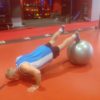
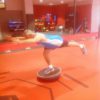
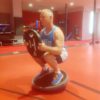
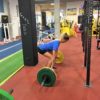
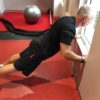
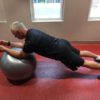
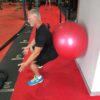
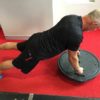
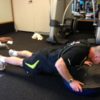
Recent Comments